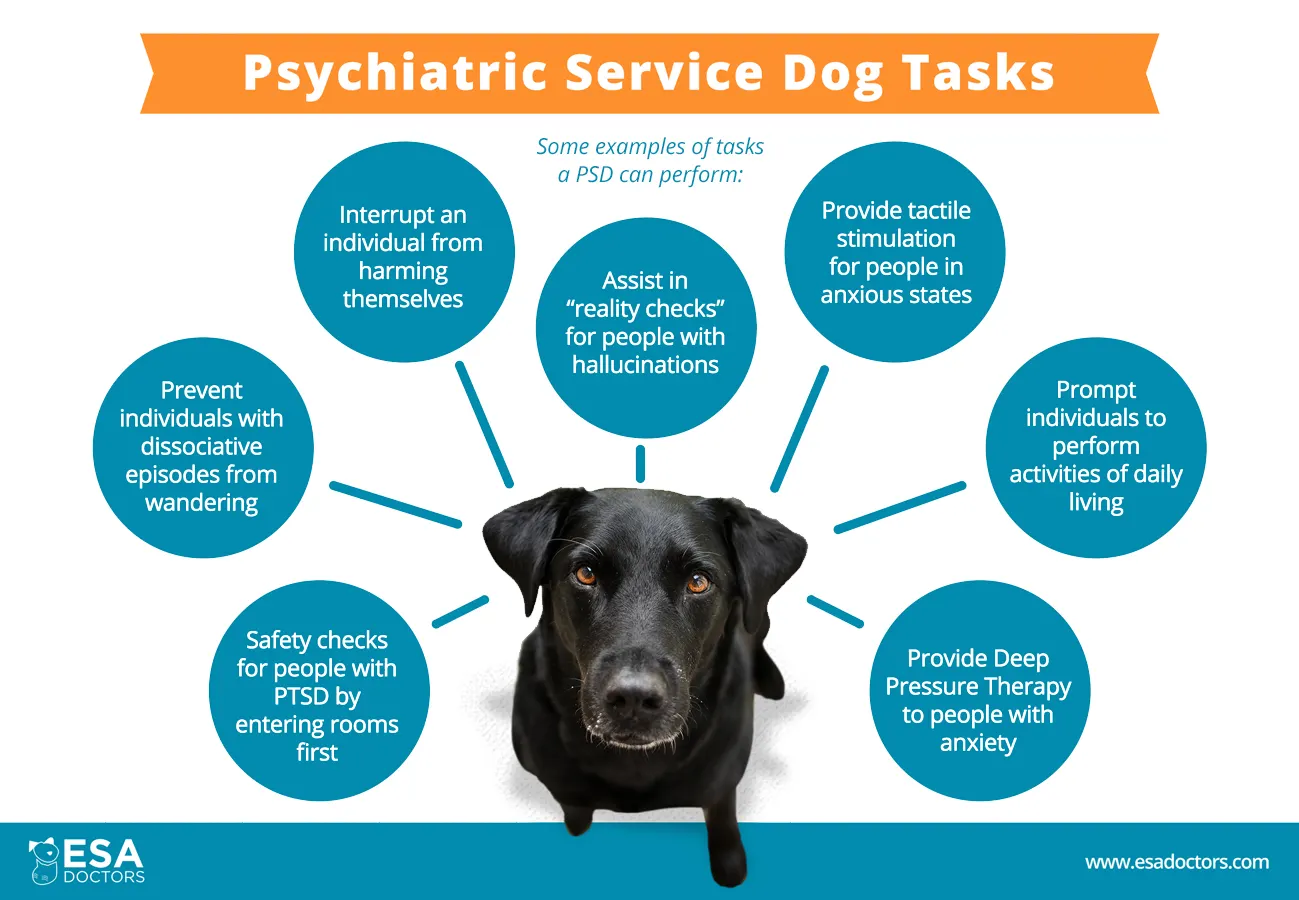Post-traumatic stress disorder, or PTSD, is a mental health condition that can develop in people who have experienced or witnessed a traumatic event. According to the National Center for PTSD, about 7–8% of the US population will experience PTSD at some point in their lives.
Symptoms of PTSD can include flashbacks, nightmares, avoidance of reminders of the traumatic event, and hyperarousal.
PTSD can be hard to address, but one approach that has gained attention in recent years is the use of psychiatric service dogs. These specially trained dogs can provide support and assistance to individuals with PTSD, helping to mitigate symptoms and improve their quality of life.
What is a psychiatric service dog?
Psychiatric service dogs are trained to perform a variety of tasks, such as providing tactile stimulation during panic attacks, waking up their handler during nightmares, and creating a physical barrier between their handler and strangers in public places.
In addition to their specific tasks, these dogs can provide emotional support and companionship to their handlers, helping them feel less isolated and more connected to the world around them.

See if you qualify for a psychiatric service dog.
Get your PSD Letter now.
Who qualifies for a PSD?
Qualifying for a psychiatric service dog can depend on various factors, including the individual’s specific symptoms and needs. For PTSD to qualify for a service dog, there are two major requirements:
- The handler’s PTSD must substantially limit one or more major life activities.
- The handler is helped by a trained service dog that performs specific tasks relating to their PTSD.
A licensed mental health professional can help determine if you have an eligible condition. Many owners of psychiatric service dogs get a PSD letter from their mental health provider.
A PSD letter states whether a person with PTSD has an eligible condition for owning a service dog. They are signed and given out by licensed health professionals who have conducted a mental health evaluation.

How can you get a psychiatric service dog for PTSD?
Purchasing a fully trained service dog can be prohibitively expensive. An alternative is to train a service dog yourself, which the ADA permits.
If you plan to train a service dog for PTSD, you should be honest about your training abilities. Consult with a professional trainer if you need help.
In addition, when adopting a dog to serve as a PSD, it’s important to choose one with the right temperament, capacity to learn, and physical ability.
Final Thoughts
While psychiatric service dogs are not a cure for PTSD, they can be valuable in helping individuals manage their symptoms and upgrade their quality of life. As awareness of the benefits of these dogs continues to grow, more individuals with PTSD may find relief through the support of a trained canine companion.
Want to know if you qualify for a Psychiatric Service Dog? Get your PSD Letter in three easy steps.





Leave a Comment